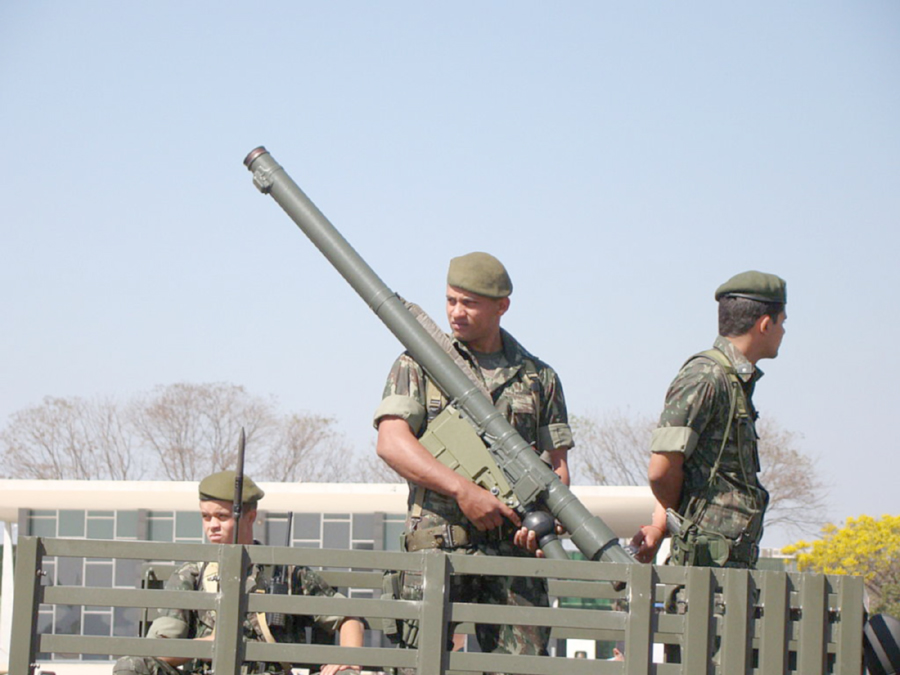By Ajai Shukla
On Wednesday, the ministry of defence (MoD) will clear the purchase of one, and possibly two, Russian weapons systems, taking orders in the Moscow pipeline to above $15 billion and underlining Russia’s status as India’s premier arms supplier. The Defence Acquisition Council (DAC) the MoD’s apex procurement body, headed by Defence Minister Rajnath Singh is poised to clear the purchase of the 9K338 Igla-S missile system for a sum of $1.3 billion. India will buy 800 launchers and 5,175 Igla-S missiles, which fall in the so-called “Very Short Range Air Defence System” (VSHORADS) category. The VSHORADS procurement has been mired in controversy. The Igla-S is a 16-year-old missile system, first built in 2004, which the Russian military replaced in 2014 with the newer, far more capable, 9K333 Verba missile.
After the MoD announced in November 2018 that it had chosen the Igla-S over the other two VSHORADS on offer Swedish firm Saab’s RBS-70; and the Mistral, offered by European consortium, MBDA Saab shot off four letters of protest to the MoD alleging foul play in testing. However, internal MoD evaluators ruled that testing had followed procedure. In a reply to Saab that Business Standard has reviewed, the MoD wrote the “case has progressed as per provisions of Defence Procurement Procedure (DPP) with level playing field to all the participating vendors.” Apparently, the MoD feels the Igla-S met India’s needs and Rosoboronexport’s price of under $1.47 billion makes it a value proposition compared to Saab’s tag of $2.6 billion and MBDA’s offer of $3.68 billion.
Russian industry sources say that, when the Indian tender was floated in 2010, they had only the Igla-S to offer since the Verba was not ready. In 2014, when the Russian military introduced the fourth-generation Verba, Rosoboronexport offered to replace the Igla-S with the new missile. But the MoD said the DPP did not permit this change. Consequently, the Indian military will get an obsolescent VSHORADS that will be almost two decades old by the time it enters service, and almost fifty years old at the end of its service life cycle. Furthermore, since the 2010 tender did not specify any “Make in India” stipulations, production of the Igla-S will take place mostly in Russia.
VSHORADS are the ground forces’ last defence against attack from enemy ground strike aircraft. At the apex level, the IAF is responsible for air defence, which it does by bombing enemy airfields to prevent combat aircraft from even taking off. Those that do manage to enter our airspace are engaged with the IAF’s fighters and missiles. However, some enemy aircraft still sneak through to attack ground troops, who protect themselves with VSHORADS. The MoD is also racing against time to bring before the DAC the long-delayed proposal to build 197 Kamov-226T helicopters for an estimated $2 billion.
This is being touted as a “Make in India” initiative, with the choppers being built by a joint venture (JV), Indo-Russian Helicopters Ltd (IRHL). The biggest stakeholder in the JV is Hindustan Aeronautics Ltd (HAL) with a 50.5 per cent stake, while Russian Helicopters has a 49.5 per cent stake. However, there will be only limited indigenisation. The inter-governmental agreement (IGA) between New Delhi and Moscow permits Russian Helicopters to deliver the first 60 helicopters in flyaway condition. The next 40 helicopters would be shipped as kits from Russia to be assembled in India. Only after that would indigenisation pick up momentum over the last 97 choppers.
The VSHORADS and Kamov-226T contracts will supplement the on-going purchase from Russia of S-400 air defence systems ($5.43 billion), AK-203 rifles ($1 billion), Krivak III frigates ($2 billion), BrahMos anti-ship missiles ($2.6 billion) and a supplementary order for 18 more Sukhoi-30MKI fighters ($1.15 billion). This will take the value of on-going arms imports from Russia to $15 billion far more than any other country, including the US. Washington, however, has created a lever to discourage Indian weapons imports from Moscow. A recent US law Countering America’s Adversaries Through Sanctions Act (CAATSA) requires the US government to sanction countries that engage in “significant transactions” with Russian, Iranian and North Korean entities. US president has the power to grant India a waiver from CAATSA. However, without large arms purchases from the US, there is no certainty that that Donald Trump would grant a waiver.


